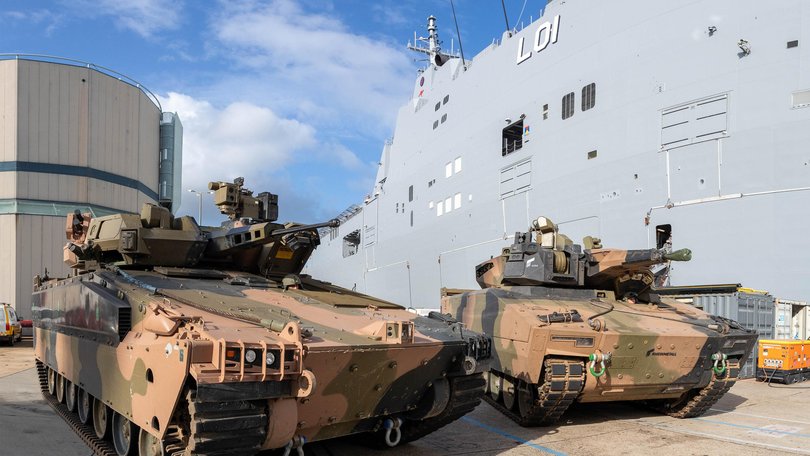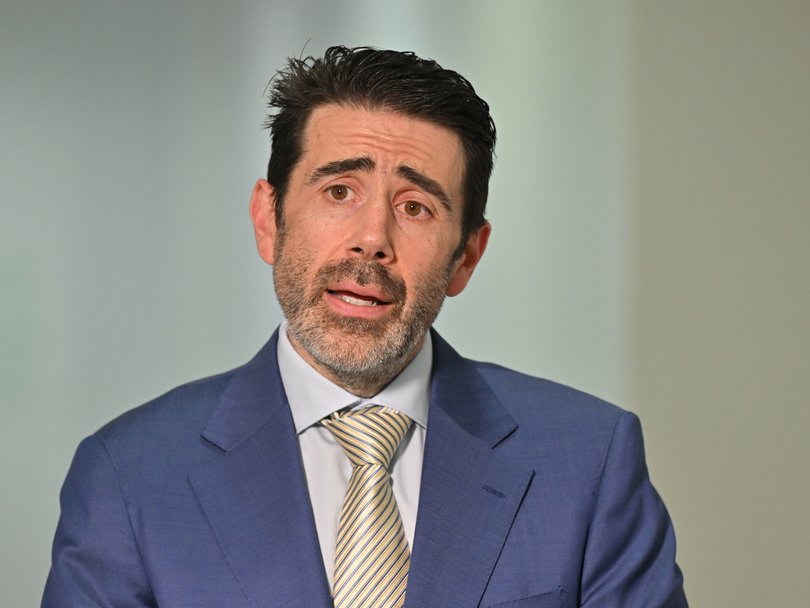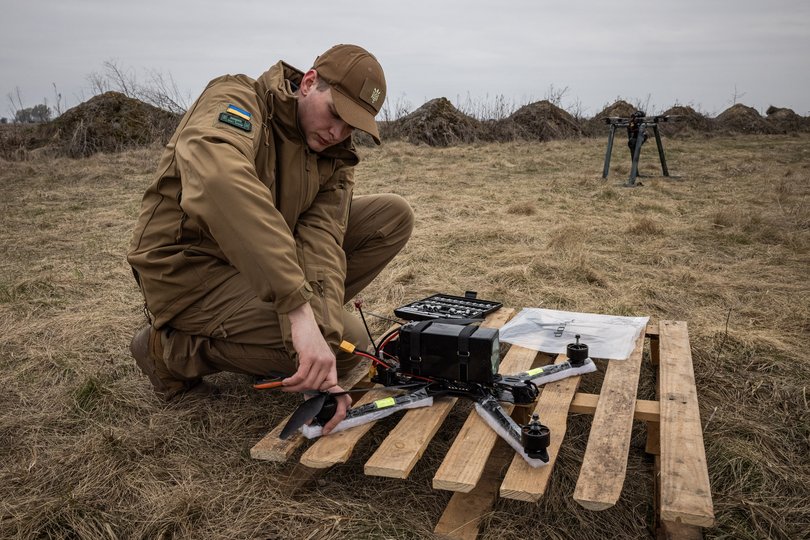We must prepare for combat on home soil: Stark warning from Australian Defence chief

Australia’s defence chief on Wednesday pledged to give “frank” future advice to the Government on defence spending as he warned the nation needs to be ready for the prospect of launching combat operations from its own turf.
Admiral David Johnston made his sobering assessment at the Australian Strategic Policy Institute’s annual defence conference, where he urged a radical rethink of the approach to war, resilience and national readiness to face rising strategic threats.
“Perhaps, finally, we’re having to reconsider Australia as a homeland from which we will conduct combat operations,” he said.
Sign up to The Nightly's newsletters.
Get the first look at the digital newspaper, curated daily stories and breaking headlines delivered to your inbox.
By continuing you agree to our Terms and Privacy Policy.“That is a very different way — almost since the Second World War — about how we think of national resilience and preparedness.
The ADF chief gave his stark prognosis against the backdrop of repeated Government warnings that Australia is living through the most dangerous strategic environment in generations.
This includes not only conflicts in Ukraine and the Middle East but a major rearmament on Australia’s doorstep in the Indo-Pacific as Beijing accelerates its unprecedented military build-up and flexes its muscles in the South China Sea and towards Taiwan.
“We may need to operate and conduct combat operations from this country, and that’s everything from our northern infrastructure, our supply chains, how we integrate with industries states and territories,” said Admiral Johnston.
Australia no longer had the “very comfortable security blanket” of a strategic warning time of ten years, he added, referring to earlier assessments of the build-up time to conflict.
This “critical judgement” had an inevitable impact on how the ADF prioritised its investments and spurred the necessity to keep pace with rapidly evolving technology, he said.
“Do we fill warehouses with equipment that we think technology will quickly overtake?” he asked.
Uncrewed systems were one example of fast-pace change, he said, pointing to Ukraine where “the cycle is somewhere up to 12 weeks” before tech investments became irrelevant because of counter strategies.
“We need to be very clear about where we make judgments about our technical investment,” urged the Admiral.
The ADF chief acknowledged an “important” debate on the overall defence budget but declined to comment on the specifics of US Defence Secretary Pete Hegseth’s recent demands for Australia to lift defence spending from the current 2 per cent of GDP to 3.5.
“Defence is fully expending its budget at the moment. That’s a good thing,” he said.

“As we’ve uplifted our acquisition, delivery workforce is improving our view of what we need to do around readiness, that does put pressure on a budget that we have to make choices on.”
Admiral Johnston said investments were now being reviewed in a quicker “biennial strategy cycle,” which allowed the ADF to put “the case to government to increase the Defence expenditure where we believe it is needed to meet particular outcomes”.
The next stocktake is due next year. “That’s where it’s my job . . . to give government that frank advice and a view of what we need to be doing,” he said.
Defence Industry Minister Pat Conroy, who also headlined the ASPI conference, dismissed criticisms of the Government’s defence investment, pledging to remain open to a budget boost to give the ADF the necessary resources.
“The fact is that the government is providing Defence with the resources it needs to deliver the national defence strategy,” he said.
“And as the Prime Minister said, we will invest in the capabilities we need. We are open to having a conversation about increasing defence funding,” he said.
But he stressed Labor would invest with “care and diligence in a way that is best for Australians,” rather than succumbing to pressure to throw money into the budget without a rational strategy.

Mr Conroy accused the security think tank of dissing a “generational investment” in defence after Prime Minister Anthony Albanese previously also hit out at the report’s critical take.
“We want a healthy debate, but contributions need to be factually balanced . . . You’re entitled to own views but not your own facts,” he said.
ASPI chief Justin Bassi earlier countered the Mr Albanese’s rebuttal with the charge that it was the group’s job to “deliver the hard truths to the government of the day”.
But Mr Conroy continued the tussle with the argument Labor had “significantly sped up” major defence capability acquisitions since coming to power in 2022.
This included a plan to more than double the size of the Navy’s surface combatant fleet and deliver the first new general-purpose frigate by 2029. “We are on track to deliver four new frigates by 2034,” he said.
Delivery of 129 new “redback” infantry fighting vehicles for the Army had been accelerated, and the Government had invested more than $330b over ten years in a program that would acquire and produce guided weapons and explosive ordnance.
“A number of High Mobility Artillery Rocket System or HIMARS launchers have already been delivered ahead of schedule,” he said.
Mr Conroy reflected the ADF chief’s comments on Ukraine’s lightning quick development of technology, describing it as a major takeaway of the war and calling Kyiv’s surprise drone strike on Russian long-range bombers “remarkable”.

“Technology cycles wait for no one, and while we will continue to invest in some very high end, exquisite platforms that are critical to the defence of the nation, you can’t put all your eggs in one basket,” he added.
“Another of the lessons of Ukraine is industrial resilience and the need to have a plan post the first three days of a conflict,” said the Minister.
The high-profile security conference also highlighted the ongoing dilemma of whether to deploy the ADF to assist with the nation’s increasingly frequent weather disasters.
Admiral Johnston called for the right balance to be struck between reassuring the public in times of need while maintaining a primary focus on external threats.
“The key for us is, and what the judgment says, we should not be the first responders. So, we need to lift the resilience of the community and the organisations that provide that support,” he said.
Joe Buffone, deputy coordinator-general of the National Emergency Management Agency, called for a re-focus on surging at speed and scale, while harnessing more private sector input.

“We’re looking at building national capability,” he said, suggesting mobilising from the current pool of 170,000 public servants.
Ukraine provided an example of civil defence feeding into national defence, he said.
“I look at (Ukraine) through a civil defence lens, rather than a military lens, and I see how the community has rallied together,” he said.
“It’s not about spending millions of dollars. It’s actually about coordination, communication, so that people have that common purpose.”

